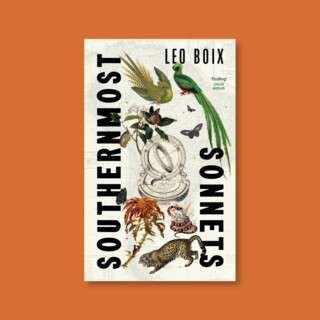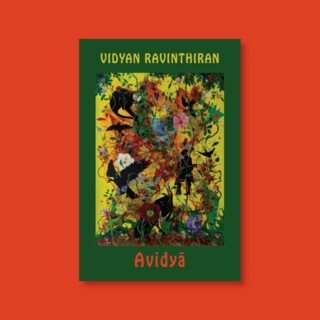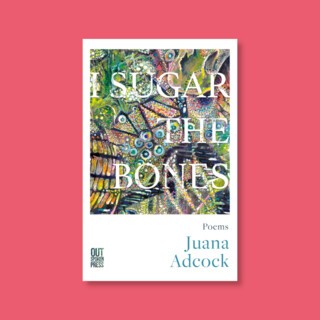Meetings: John Berger In the Library - from ‘A Jar of Wild Flowers’
Posted by Nirmal Puwar

The London Review Bookshop’s Author of the Month for November is John Berger. In this essay from ‘A Jar of Wild Flowers’, published by Zed Books in honour of Berger’s 90th birthday, Nirmal Puwar reflects on first encountering Berger’s work in Stoke library in Coventry.
We are never just looking at one thing, we are always looking at the relationship between things and ourselves. Our vision is continually active, continually moving, continually holding things in a circle around itself, constituting what is present to us as we are.
— John Berger, Ways of Seeing, p. 9
On the shelves under the small section of the local library labelled ‘Sociology’, I found John Berger’s book Ways of Seeing. The book foregrounds how the relationship between what we see and what we know is never settled. I was then, in my teens, trying to decide if I wanted to study the rather unknown subject called Sociology at A level. Stoke library, in Coventry, was a familiar space. My family were regular visitors. We lived a minute’s walk away. As children we frequented it at least three or four times a week. Within this fan-shaped building there were different zones. The children’s room consisted of fiction as well as the important general-knowledge and reference- based encyclopaedic tombs used for homework. This room led off from the more adult room carrying general knowledge and reference books, as well as fiction in several languages, including Urdu, Punjabi and Gujarati.
The neighbourhood and the city of Coventry became a work mecca for arrivants from the British ex-colonies in the period between the two world wars and especially the post-1945 period. It was considered a boomtown for employment and training in engineering and the car industry. Reflecting some of the interests of the arrivants – who were, before they even knew it, settling into the city as ‘home’ – the library started stocking a ‘multicultural’ collection, including a large selection of Asian vinyl records and cassettes. In time, following on from changes in music technologies, this collection shifted to CDs and DVDs. In the zone leading off from the central room, which carried these items as well as local reference materials and fiction, one walked into a space with further adult books, sitting under authoritative labels such as ‘History’. Though the shelf space was much smaller, nevertheless the subject ‘Sociology’ was granted the recognition of a heading, reassuring a teenager that sociology was becoming a proper subject to study.
Finding John Berger’s Ways of Seeing in this section added to the intrigue of a somewhat esoteric subject with an ‘ology’ attached to it. The only other ology I knew of then was biology. While the classifications in biology of the human and plant world appealed to me, I knew I was not heading towards a scientific specialism. Interestingly, the books in our home, in a room which became a study with shelves, consisted of scientific works, on chemistry, physics, maths, technical drawing. This was the (male) educational tradition in the family. As I held John Berger’s Ways of Seeing in my hands, I doubt if I understood much of it. I still remember, though, that what impressed me was the form. The compilation of the book from words, paintings, advertisements and statements was fascinating. The very emphasis in the title on ways of seeing spoke to me more than the commentary on specific historic paintings. Little did I know then that this kind of compilation was a million miles away from what was considered proper or authoritative sociology. Neither did I know then that I would never actually be taught Berger.
Within the fan-shaped library, in the same room as the section for Sociology, are to be found broadsheet and tabloid newspapers, as well as magazines. A number of non-European papers and magazines have been regularly stocked for some years. On a table close to the racks for papers and magazines, regulars arrive to place their spectacles on and off the table as they browse and become pulled in closer to the news-sheets by the contents of the words and images: news from here, there and everywhere, from the ‘home’ they left fifty or so years ago, as well gossip and titbits, alongside adverts.
If Berger were to sit down at the roundtable, among these newspapers and magazines, with the library’s regular visitors, one can imagine how Chapter 7 of Ways of Seeing might have been written differently. Of course the contrast between the poor and rich noted by Berger from gleaning English publications could also be found on the pages of the Urdu and Hindi press. As could the viewing postures of women inviting further viewing. Here readers shuffle their hands between papers in different languages. Shaking the creases out of Punjabi and English pages. The allure of consumption and lifestyles includes products to be realised in, and objects the readers themselves might have laboured over. Cars – from the high status Jaguar to the more commonplace, but still sought-after, Ford and Peugeot have all been produced on the assembly lines in Coventry and neighbouring cities such as Leamington Spa. At the table in this section of the library, Berger would also have found readers taking in reportage of state violence and counterviolence movements in Kashmir or the Punjab. A different compilation of images, geopolitical situations, stories and languages would have had to be considered for the assemblage of Berger’s ways of seeing. His visit might even have coincided with one of the heated debates that occasionally spontaneously erupted, though most of these vexed conversations took place in the much larger two-storey central branch of Coventry City Library located in the city centre, a mile away from Stoke library. At any time of the day, here you could find at least a handful of men from India and Pakistan gathered, switching between discussing international news and the price of fish in the local market, and reciting poetry at and to each other. These were overwhelmingly social gatherings of older men, most of whom had retired from working long day or night shifts on assembly lines within different industrial lines located across and slightly beyond the city. Dunlop, Ford, GEC, Courtaulds were regular workplaces for men and women.
Unusually for the time, in the 1970s, Berger and Mohr were drawn to highlight the condition and contributions of migrancy in northern Europe. This was well before migration became a hot academic topic, as it is now. The work of John Berger has been translated into several non-European languages, including Farsi, Arabic, Korean, Turkish and Punjabi. This was especially so for A Seventh Man, which was published in various languages in the 1970s and has journeyed to perhaps the most unexpected places. Berger himself was surprised when he found the book on a makeshift shelf in a shanty town in Istanbul. He notes that it was no longer a sociological treatise. Rather it had ‘an intimate address’, as ‘a book of life stories, a sequence of lived moments’, akin to a ‘family photo album’. Car production, assembly lines, hot and heavy foundry work, as well as the hard labour of digging tunnels all feature in the words and images collected in A Seventh Man as a result of the conversations with the migrant men, Berger and his long-time photographic collaborator Jean Mohr encountered.
The important themes of arrival, work and return featured as overbearing threads in the lives of migrants looking for work in northern Europe. As noted by Berger, the book does not directly feature men or women from the former colonies then living in northern Europe. Nevertheless, there are still parallels to be found. Not only are there similarities in the conditions of hard industrial labour; the hopes for the future and the pain of longing for home, as well as the comfort of recognised words and music, were also present in the lives of men and women who migrated from the colonies to the mother country in Britain. Like the figures in A Seventh Man, they also planned for the glory moment of undertaking the journey home – with the status of accrued material possession – whilst enduring the nights of labour as well as the hateful looks bestowed on an unwanted stranger. Indeed these elements continue with the bodies that move from different locations and contexts across the globe today. Looking back to the 1975 publication of A Seventh Man in 2010, when the book was republished, Berger writes: ‘It can happen that a book, unlike its authors, grows younger as the years pass. And this I believe is what may have happened to ‘A Seventh Man’. Even though Berger has a global readership and many international collaborators, the authoritative commentators remain a largely European fraternity. Critics and reviewers have an impact on how legacies are defined. Time and death are reccurring concerns in Berger’s works. He has, for instance, spent much time with Rembrandt’s paintings, characterising him as a painter of ageing. Berger has often featured people in his stories after their death. In these commentaries he has mentioned how (he) the storyteller becomes Death’s Secretary. In Here Is Where We Meet, for instance, in Lisbon the male narrator recognises the gait of a elderly woman walking towards him. As she comes closer, he notes that it is his mother, who has been dead fifteen years. She declares that the dead do not stay where they are buried. Berger’s work often brings the dead into imaginative, playful meetings. For him, more often than not, the dead are always with us. On the last page of And Our Faces, My Heart, Brief as Photos, he speaks of the peace derived from having his bones strewn on the ground next to his beloved. Wherein it is enough to be phosphate of calcium together. Where do we place the dead when they are gone?
A lifetime’s work ages very differently, especially when a person goes. Receptions wax and wane. In The Sense of An Interior, Diane Fuss surveys the locations, items and furniture of noted writers such as Freud and Proust. Proust is well known for making snuff out of his parent’s stuff. Once they had died he filled his apartment to the brink with their stuff. For the 100th anniversary of the philosopher Adorno’s birth, in 2003, the city of Frankfurt commissioned the Russian artist Vadim Zakharov to build a monument for Theodor W. Adorno-Platz. In a re-creation, Adorno’s chair and desk are enclosed in a large cube of safety glass; an open copy of Adorno’s work Negative Dialektik is placed on the desk, along with a lamp that switches on at night; the base of the cube is surrounded by black and white granite tiles engraved with quotes from Adorno. Robert Hullot-Kentor has described the events of the jubilee as ‘a lugubrious display’, noting how the ‘jubilee successfully portrayed the life of the man as if a single strand carried him from birth to garlanded tomb’. Tensions, movements, expulsions and frustrations often get flattened out in monumental memorialisation. Monuments can transpose conflict into consensus. The chair and desk stand in to encase the ghost of Adorno. Yet in Frankfurt University itself it is a struggle to find Adorno or the rest of the Frankfurt School on the university curriculum.
Interiors of learning don’t have to become museumified. Libraries are very specific domains where the private thoughts and interaction with a range of reading materials occurs in public. They are public-private rooms of research as well as writing. For years, scholars, researchers and writers continued to visit the same circular room of the British Library in London, just as Karl Marx had done when he penned his own writing tomes. The public library in Manchester carries on this tradition too. Thus these public-private rooms of research and reading continue to be forms of heritage which are in Stuart Hall’s terminology ‘living archives’ – archives which breath, grow and invite engagement.
It is in the tradition of the living archive that I would like to return to the fan-shaped library in Coventry. If Berger had visited and sat at the circular table with the newspapers and magazines from different countries, he would have found a tall elderly Asian man, with a full head of hair, pulling newspapers up close to him, while setting his glasses on and off, between nose and table. Depending on which year Berger visited the library, he would have found either just his coat hanging on the chair, or one walking stick, or two walking sticks, or a zimmer frame nearby, or a wheelchair. Each of these aids characterised his ageing as well as the resurgence of injuries endured during wartime in Burma in his younger years in the Second World War as a recruit to the Indian British Army.
Herein, I have become, in Berger’s sense, Death’s Secretary. I am referring to my father, Sawarn Singh. He started visiting the local library several times a day after he retired. He actually retired twice, first in the seventies when he left the night shift on the Ford assembly line and then again in the mid eighties from his job as an attendant at the Herbert Art Gallery and Museum. In contrast to his time at Ford, in the museum he walked the much grander, and cleaner, corridors across several floors. As nighttime security guards, he and his co-worker took tea together while sharing the hourly walk through the gallery as a security check throughout the night. Sculptures by Barbara Hepworth and penny-farthing bicycles as well as halls of transport items filled the large space they kept guard over. Six-foot canvases of Lady Godiva naked on horseback, painted by John Collier (in 1898), craned the necks of viewers walking up the grand staircases.
If Berger had sat at the table in the library my father visited he would have found a collage of materials that contributed to my father’s ways of seeing. His own compilation of Ways of Seeing would have been a bit different from the one Berger assembled. He kept company with an eclectic mix of reading materials. He read the Daily Jang Urdu newspaper, the weekly Punjabi Des Pardes, as well as the tabloid Mirror. In fact, at times he cut out from the English papers to share with his family advertisements for products –possible items to buy – which promised an easier life. These might be slip-on shoes, elasticated trousers or a Ford car, on which he was entitled to get a discount as a former employee. His routine consisted of regularly checking out Urdu novels from the library to read at home, especially before bedtime. Romantic and adventure stories comprised the ever-changing books in his bedside drawer. Not wanting to feel the weight of material items in his care, he usually limited himself to taking out two to three books at a time. Towards the very last years of his life he would continually throw items away, avoiding what he perceived as the stress of having to look after stuff. In contrast to Proust he was not into making snuff out of stuff.
When he passed away in 2013 (aged 94) the library staff, a good number of whom were South Asian, sent a message saying that they would miss his presence: for them he had become a part of the furniture for at least twenty years. Rather like the long-gone mother who appears in Lisbon in Berger’s Here Is Where we Meet, the staff might look up from their counter only to see Sawarn Singh’s large frame walking in, leaning in on his zimmer frame, with his greeting smile – the outline of his trace bearing a ghostly presence and reminder of his loss. The architectural emplacement of the body in the built environment like all architectures gives way to the play of time. Should Berger also come back on this occasion to Stoke library, he might trace a line drawing of Sawarn Singh, offering us a portraiture. He has often painted to shed light on the labour and life of welders, steelworkers, fisherman and performers.
If Berger had come to the table in Stoke library he would not only have met Sawarn Singh reading and holding in his hands very different materials to those Berger sifted through to make Ways of Seeing. He would have also have met a man handling pen and paper, as a person who wrote, somebody who made sentences with words without being a formal writer like Berger; a common relationship to pen, paper and word of working-class men and women. In the library, letters were penned on sky-blue airmail paper for ‘home’. Now and again my father would lend a writing hand to those fellow travellers to the mother country in need of a letter ‘home’. Sitting at the table in the library he occasionally wrote shayari (poetry in Urdu), to be later recited among other older Asian men who met weekly with food and drink in a local school annexe. Since his death, I have been told by some of his poet friends (Prem Sharma and Ram Krishan Prashar) that he wrote – in Urdu, the language of his schooling – his life story, something akin to a memoir or autobiographical notes. As a family we are yet to stumble across them. Herein we are quite literally tasked with being Death’s Secretary. Such is the stuff that meetings with people and their materials are made of.
Nirmal Puwar is a reader in sociology at Goldsmiths, University of London. She has published ‘Space Invaders: Race, Gender, Bodies out of Place’ (2004). Her work solicits creative, critical and public methodologies to both disrupt space and to think space anew. ‘A Jar of Wildflowers’ is published by Zed Books, priced at £10.99.








